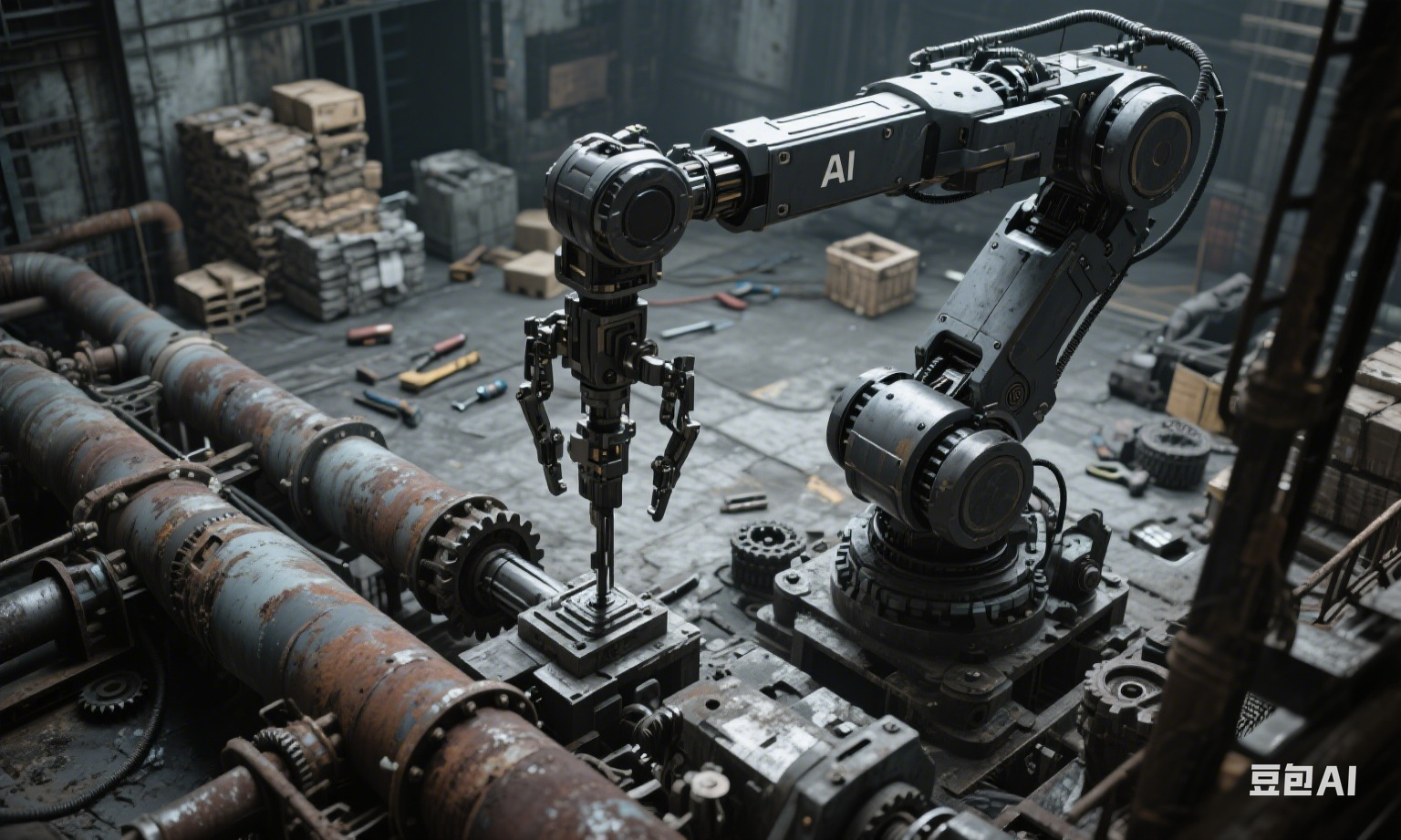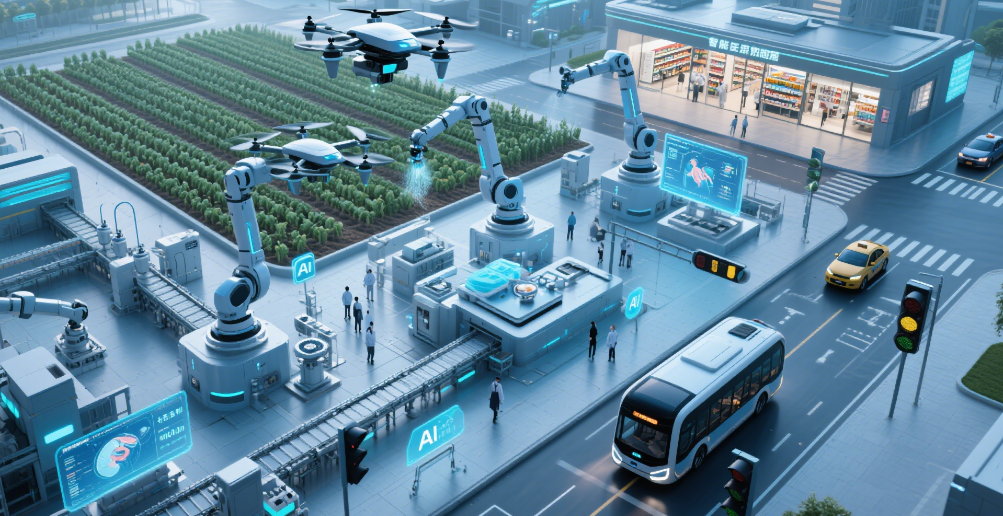2024 AI Top 10 Disruptive Technologies: The Future Battle of Big Models, Embodied Intelligence, and
In 2024, the field of artificial intelligence (AI) will usher in an unprecedented technological revolution. From the explosive growth of large models to breakthrough advances in embodied intelligence, and to the clinical implementation of brain computer interface technology, AI is reshaping the technological landscape in a disruptive manner. This article will focus on the three core areas of big models, embodied intelligence, and brain computer interfaces, analyze the top ten disruptive technologies of AI in 2024, and explore the deep logic of their future battles.
1. Multimodal large models: breaking down data barriers
In 2024, multimodal large models will become the core breakthrough point of AI technology. Represented by Google DeepMind's Genie 2 and Tencent's hybrid video generation models, these models can not only process text and images, but also generate 3D scenes and video content. Its physical simulation capability has significantly improved, providing underlying support for intelligent agents to interact in complex environments. For example, Genie 2 generated a virtual world with spatial consistency through an autoregressive latent diffusion model, opening up new paths for fields such as autonomous driving and industrial simulation.
2. Domain Big Model: "Precision Surgical Knife" for Vertical Industries
The big model is moving from generalization to specialization. In the medical field, the "AI Hospital" system developed by the Intelligent Industry Research Institute of Tsinghua University has covered 21 departments and achieved disease prediction and diagnosis through customized models; In the legal industry, intelligent document generation systems have increased the efficiency of legal consultation by 80%. The domain big model, trained with professional data, solves the problem of general models being "out of place" in vertical scenarios and becomes the core engine for industry digital transformation.
3. Lightweight model: the "last mile" of edge computing
To cope with the computing power limitations of edge devices, breakthroughs have been made in lightweight modeling technology. For example, fine-tuning techniques based on knowledge distillation and model pruning enable large models to achieve real-time inference on smartphones and smart wearable devices. This technology not only reduces hardware costs, but also promotes the large-scale implementation of AI in industrial quality inspection, smart home and other scenarios.
4. Embodied cerebellar model: the "motor center" of robots
In 2024, the field of embodied intelligence will see a key breakthrough - the embodied cerebellar model. This model enables robots to complete high dynamic and high-frequency planning and control in complex environments through multi model voting and ensemble learning. For example, Boston Dynamics robots have achieved autonomous obstacle avoidance and path optimization through embodied cerebellar models, with a 40% improvement in motion accuracy compared to traditional algorithms. This technology provides highly robust solutions for industrial automation, disaster relief, and other scenarios.
5. Humanoid robots: the "ultimate form" of general artificial intelligence
Humanoid robots have become the ultimate goal of embodied intelligence. Tesla Optimus, Xiaomi CyberOne and other products will achieve mass production in 2024, with multimodal perception and natural interaction capabilities. For example, Optimus can complete household tasks through voice commands, and its decision-making system is based on reinforcement learning algorithms that can autonomously plan actions in unknown environments. This breakthrough marks the leap of AI from "digital existence" to "physical entities".
6. Physical artificial intelligence systems: the "smart awakening" of traditional devices
Physical artificial intelligence systems empower AI to physical objects in the physical world. For example, smart grids optimize energy allocation through AI, while industrial robotic arms achieve adaptive grasping through embodied intelligence. This technology breaks through the functional limitations of traditional devices and promotes the intelligent upgrading of manufacturing and energy industries.
7. Invasive Brain Computer Interface: The 'Light of Hope' for Paralyzed Patients
In 2024, invasive brain computer interface technology will reach a milestone. The American company "NeuroConnect" has completed its third human implant surgery, allowing patients to control the cursor and play electronic games with their thoughts; The Chinese "Beinao-1" team has successfully reconstructed the language communication ability of patients with ALS. These technologies, through high-density flexible electrodes and AI decoding algorithms, convert brain signals into executable instructions, providing a revolutionary solution for the treatment of neurological diseases.
8. Non invasive brain computer interface: a "new interactive paradigm" for education and entertainment
Non invasive brain computer interface technology is gradually moving towards commercialization. In the field of education, by monitoring students' EEG signals, AI can analyze their attention status and achieve personalized teaching; In the entertainment industry, VR games combined with brain computer interface technology allow players to control game characters through their thoughts. This technology breaks the limitations of traditional interaction methods and creates new growth points for the education and entertainment industries.
9. AI Empowering Brain Computer Interfaces: "Exponential Improvement" in Decoding Efficiency
The integration of AI algorithms significantly improves the performance of brain computer interfaces. For example, through deep learning models, the decoding speed of EEG signals has been reduced from 20 seconds to 3 seconds, and the accuracy has been improved by 60%. This breakthrough has propelled brain computer interface technology from the laboratory to clinical applications, driving rapid development in scenarios such as neurorehabilitation and human-machine collaboration.
In 2024, the disruptive technology of AI has moved from the laboratory to reality. The 'future battle' of big models, embodied intelligence, and brain computer interfaces is not only a competition of technological strength, but also an exploration of the essence of intelligence by humans. In this transformation, China has been on par with technological powers such as the United States and Europe, making breakthroughs in core areas. However, the ultimate value of technology lies in serving humanity. How to find a balance between innovation and ethics will be the core proposition of the future battle of AI.
The future is here, only by embracing change with an open mind and driving technological progress with a responsible attitude can we stand undefeated in the wave of AI.












